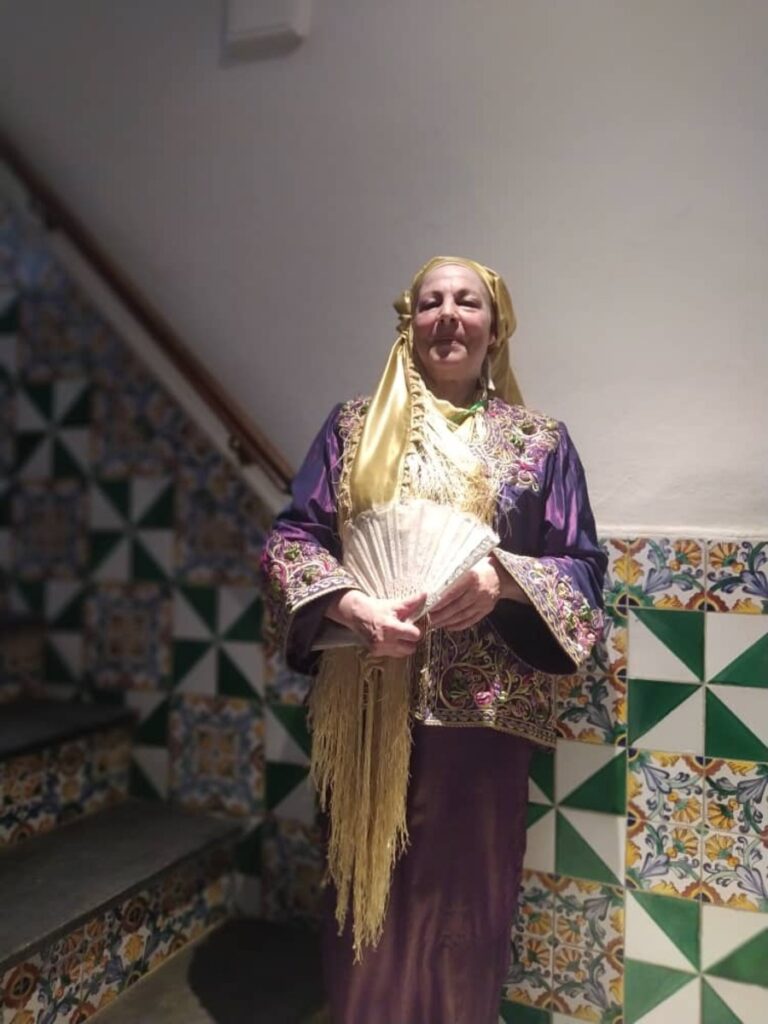The clothing heritage generates great enthusiasm in Algeria. Worn by women during festive occasions, caftans, karakous, melhafas, and other serwals are the result of a cultural mix that spans several centuries. Preserving this intangible heritage through training in tailoring techniques is at the heart of the Algerian Traditional Clothing Festival.

Dressed in her purple satin karakou, Naïma Boukabraine proudly strolls through the corridors of the Palace of the Raïs. In this month of July, this defensive structure of Algiers built during the Ottoman era hosts the 6th edition of the Algerian Traditional Clothing Festival. A retired teacher, Naïma Boukabraine has long taught Algerian embroidery techniques. For her, retirement is not really a break as she continues to pass on her knowledge. "Algerian embroidery is an art recognized worldwide, we must teach it to the new generations. It's not easy, as there is a lack of interest in all crafts. It is therefore our responsibility to train the youth by highlighting the benefits of mastering these techniques, especially since the demand is high," she explains.
Faïza Riache, director of the Palace of the Raïs and commissioner of this festival, believes that training is certainly the most important aspect, as it is the main axis for the transmission of this ancestral know-how. "For this sixth edition dedicated to Algerian embroidery, we have created a workshop for children so they can have their first contact with thread, needle, and fabric. Of course, this activity will only last a few days, the duration of the festival. We need to move towards a sustainable framework. To achieve this, we will present recommendations to the Ministry of Culture so that the crafts of artisanal production are included in professional training programs. We will also propose that these techniques be elevated to the status of national art. All these actions aim to highlight Algerian identity and culture," Faïza Riache explains.
Capital of Mediterranean Fashion

The development of clothing heritage in the Maghreb, particularly in Algeria, is the result of cultural blends that date back to antiquity. Lamelhafa, a piece of wool or cotton fabric held together with metal fibulas, is still worn in certain regions of Algeria, especially in the Aures. This attire has transcended ages. According to Aïcha Hannafi, a teacher at the Institute of Archaeology at the University of Algiers II, all civilizations that have passed through Algeria have brought new elements that were adopted and transformed by the local populations. The archaeologist cites the example of the ghlila, an embroidered jacket introduced by the Andalusians who had left Spain for Algerian cities immediately after the fall of Granada at the end of the 15th century. "In fact, the Andalusian ghlila underwent modifications upon its entry into Algeria. Women made sure to adapt this garment to the local context by mixing it with other pieces of clothing to create the karakou, a typically Algerian attire. The same process can be observed with the derra, which is a richly decorated dress with precious stone inlays also coming from Andalusia. It was worn in Tlemcen, Oran, Algiers, and Constantine. This derra is actually the ancestor of the famous Fergani dress of Constantine and the blousa of Oran. In the 18th century in Algiers, a true revolution took place as women chose to abandon dresses and decided to wear pants, the famous serwal chelka. Women had the opportunity to wear magnificent clothes with precious fabrics and inlays. We can say that Algerian women of that time wore royal garments and that Algiers was one of the fashion capitals of the Mediterranean," emphasizes Aïcha Hannafi.
The caftan, introduced by the Ottomans, was originally worn by men and reserved for dignitaries representing the Sublime Porte. "It was in Algeria that it was adopted by women in its current form and then exported to all regions of the Maghreb." Aïcha Hannafi indicates that men were not left behind. They also had outfits made of different fabrics and featuring embroidery. In major cities, clothing was never neutral. Personalized, they allowed to highlight the social status of the person wearing them. It is important to specify that the economic situation played a major role in the development of clothing. During the period from the 15th to the 18th century, Algeria concentrated a lot of wealth thanks to trade, piracy, and agriculture.
Transmission of knowledge
During the French colonization, the priority was to maintain the know-how in the face of numerous restrictions. "Within families, efforts were made to preserve and pass on the trades and gestures. One thing, however, has changed, which is the richness of clothing that has significantly declined compared to the Ottoman period. It is evident that this is due to the economic context of that period. The most important thing is that Algerians have managed to preserve a large part of this heritage that has crossed the ages. It has even been observed that traditional clothing continued to evolve. This is seen especially in the embroideries, where floral motifs gradually replaced the baroque style," notes the teacher. The mechanisms of transmission and preservation of tailoring techniques in Algeria are particularly interesting. Indeed, the dissemination of this know-how was not limited to the family space alone. During her youth, Naïma Boukabraine learned embroidery with the missionary sisters of Our Lady of Africa. "It must be said that the white sisters did not just teach us the techniques, they made sure to teach us the origins of all the stitches and their meanings. The sister in charge of the training told me that she had learned embroidery from an old Algerian woman who worked in an orphanage located in Bouzaréah, on the heights of the city," she affirms. For Faiza Riache, the priority should be the preservation of this heritage by avoiding "modernization actions." "I believe it is important to reproduce traditional clothing as it was in the past," insists the festival commissioner. "Modernizing these clothes risks causing a loss of this heritage."

